#but i keep hearing this one is so much better and uchikoshi is back on track and im hyyyyyped
Explore tagged Tumblr posts
Text
2020 Favorite Video Games

I don’t know if I am an outlier or if this is the same for everyone else but I really did not play a lot of games this year. 2020 was a very harsh year for all of us, especially for me for some personal reasons. So to get to the chase, I am just gonna say it left me not doing much in what little free time I did have, and I didn’t play much either. Usually I try to keep my lists for ‘favorite of the year’ to only titles released that year but since I played so little this year, screw it. I am gonna include any game I played this year regardless of release date.
Collection of SaGa
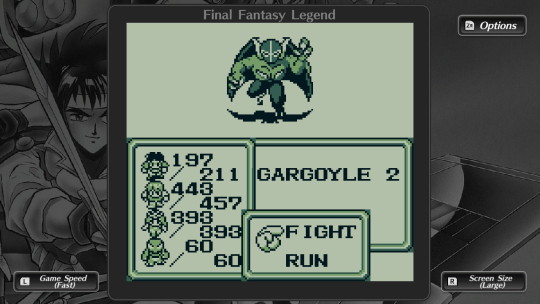
By far a flawed rerelease. It’s bare bones: there are no advance features you would usually expect out of these kinds of emulated rereleases like save states, fast forward, or rewind, and there was no real effort made to touch up almost 30 year old localizations that had to meet Nintendo of America’s then harsh standards. This really is just 3 roms slapped into a nice looking interface with an option to increase the game speed (which by the way you better use, the characters walk very slow in these old games).
I am bit harsh here, but only because I thought the Romancing SaGa remasters and the upcoming SaGa Frontier remaster all looked like they got a great budget and a lot of love while this is just another Collection of Mana situation (moreso specifically talking about Seiken Densetsu 1/Final Fantasy Adventure/Adventures of Mana part of that collection). I would have loved to see Square Enix do a bit more for these older games. Or at least include the remakes. Seiken Densetsu 1 had two great remakes, both unused in Collection of Mana, and all three of these original SaGa titles have remakes that have never seen the light of day outside of Japan. How great would it have been to get the Wonderswan remake of SaGa 1, as well as the Nintendo DS remakes of Saga 2 and SaGa 3?
But my gripes aside, these games are still fun as they ever were. Replaying SaGa 1 specifically during the holiday season really helped calm me down and made me feel at ease. It’s easy to forget but even in their Gameboy roots there are a lot of funky and weird experimental choices being made in these games. They aren’t your run-of-the-mil dragon quest (or considering the gameboy, maybe pokemon would be more apt) clones.
Raging Loop
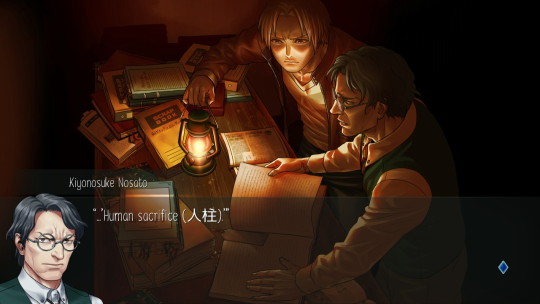
Perhaps my favorite game of the year, Raging Loop is one of the best visual novels I have ever played hands down. The level of creativity and splitting story paths that went into it is simply mind blowing. The basic premise is both a wonderful throwback to the old days of Chunsoft sound novels while still modern and somewhat reminiscent of both Higurashi and Danganronpa. Essentially you play as Haruaki, a poor slub that got lost in the mountains with no clue where to go until you stumble upon an old rural village with a strange history and even stranger superstitions. Before you know it there has been a murder and the Feast is now afoot.
The less said about Raging Loop the better, although I do want to say a lot about it one day if I ever can write a proper review of it. This is a gripping game that will take hold of you once you get into it though and never let go. I actually 100%-ed this and I very rarely do that. I got every ending, every bonus hidden ending, played the entire game twice to hear all the hidden details it purposely hides on your first play through, played all the bonus epilogue chapters, unlocked all the hidden voice actor interviews, collected all the art work, etc, etc. I was just obsessed with this game, it’s that damn good! And the main character is maybe the best troll in all of video games, god bless Haruaki.
Root Double
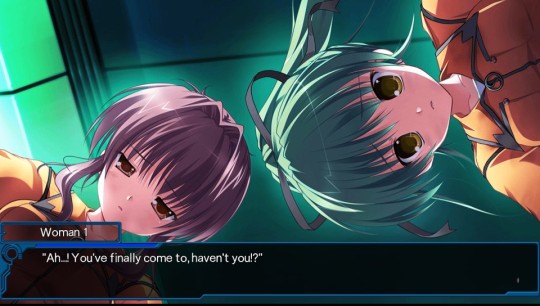
From Takumi Nakazawa, long time contributor to Kotaro Uchikoshi’s work comes a game any fan of Zero Escape or Uchikoshi in general will probably enjoy. Root Double, like its name suggests is a visual novel with two different routes, hence Root Double. The first route stars Watase Kasasagi, the leader of an elite rescue team in the midst of their greatest crisis yet that could lead to nuclear devastation as they try to evacuate a nuclear research facility that has gone awry.
The other route stars Natsuhiko Tenkawa, an everyday high schooler whose peaceful life is thrown into turmoil when he stumbles upon a terrorist plot to destroy the nuclear facility in the city and his attempts to stop them. Together the two separate plots weave into one and creates a really crazy ride. Part Chernobyl, part science fiction, any fan of the genre will easily enjoy it. And hey it’s kind of relevant to include on this list too since it just got a Switch port this year (I played it on steam though).
Snack World

I was shocked upon starting Snack World as it is instantly incredibly charming, witty, and downright hilarious at times yet I heard almost zero people talk about it. EVER. This game is Dragon Quest levels of quirky though, and the localization is incredible. The game has such an oddball sense of humor that works really well with its presentation right down to the anime opening video that sings about the most bizarre things. Instead of the usual pump up song about the cool adventure ahead we get stuff like wanting to go out to a restaurant and eat pork chops.
The self aware/fourth wall breaking humor is just enough to be really funny, but doesn't overstay its welcome and always makes it work right in the context of the dialogue. And finally, just everything; with the menus, the name of side quests and missions, and the character dialogue -- are all just so witty and full of quirky humor. This is one hell of a charming and funny game and addictive to boot.
Trials of Mana

Trials of Mana has gone from one of those legendary unlocalized games, to one of the first major breakthroughs in fan translation, to finally getting an official English release complete with a fully 3D remake. In a lot of ways from a western perspective this game has had an incredible journey. As for this remake itself, I really found myself having tons of fun with it. I loved the graphics, and the voice acting while a bit on the cheaper side almost kind of adds to the charm since both the graphics and acting really give it an old PS2 vibe. I know that is probably just more me being weird but yeah, I had to say it.
I really hope Square Enix sticks to this style of remake more often, instead of just doing Final Fantasy VII Remakes that break the bank and involve extensive tweaking to both plot and game play. I’ll take smaller budget projects that play more like the original game any day personally. I wouldn’t mind if they also deliver a brand new Mana game all together in this engine either.
Utawarerumono Trilogy
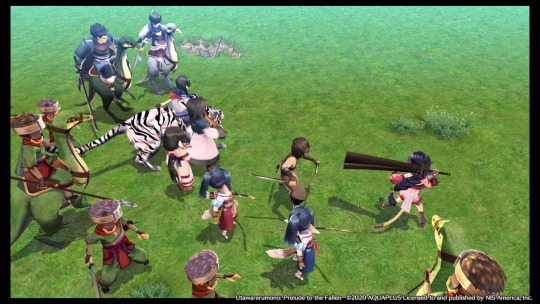
This year saw the release of the first entry in the series, Utawarerumono: Prelude to the Fallen--and thus finally after three years since the sequels Utawarerumono: Mask of Deception and Utawarerumono: Mask of Truth came out in 2017 the trilogy is now complete in English. I ended up binging through Prelude to the Fallen very fast shortly after it came out and immediately jumped on to the sequels. Perhaps the best part of 2020 was that I finally played all three of these fantastic games, and did so back-to-back-to-back. Playing the first Utawarerumono was an experience I will never forget, it was like visiting old friends again that I haven’t seen in ages, by and large thanks to the fact that I saw the anime adaption of the game when I was much younger, nearly a decade ago. Back then I would have never of dreamed that I would get to play the actual game and get the real experience.
And it only got better from here, as all three games are such wonderful experiences from start to finish. The stories are all so deep, and by the time you get to the third entry, Mask of Truth, it’s crazy to see how they all connected over so many years and weaved together into a plot much bigger than they ever were. What carries it beyond all that though has to be the fun and addicting strategy role playing game aspect, which while a bit on the easy side, is still so much fun and helps make the game feel better paced since you get to play the conquests your characters go on and not just read about all the battles they fight. Beyond that the games are packed full of awesome characters, and I know I’ll never forget the amazing leads in all of them. Hakuowlo, Haku, and Oshtor will all go down as some of the greats to me.
Ys: Memories of Celceta
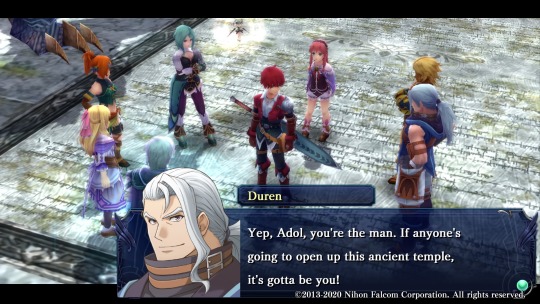
Ys: Memories of Celceta is a full 3D remake of Ys IV, a rather infamous game in Falcom’s Ys series. Not to get bogged down too much into the history of Falcom but by this point they were facing a lot of hardship and had to outsource this entry to other developers, and thus passed it on to two particular developers they had a business relationship with, creating two unique versions of Ys IV. Tonkin House who had worked on Super Famicom port of Ys III with Falcom ended up creating their own YS IV entry, Mask of the Sun for the very same system, where Hudson soft who had produced the much beloved Ys Books I & II remakes for the Turbografix (PC Engine) CD add-on created their own Ys IV entry Dawn of Ys for that console. Both games followed guidelines and ideas outlined from Falcom themselves but both radically diverged from each other and turned into completely different games.
Falcom finally putting an end to this debate on which version of Ys IV you should play have gone and created their own definitive Ys IV in 2012 for the Playstation Vita. I played the 2020 remastered version of this remake on my PS4. I even bought this on the Vita when it first came out but I am horrible and only horde games, never play them. So it was a lot of fun to finally play this.
Memories of Celceta is probably one of the best starting points for anyone looking to get into Ys, especially if you only want to stay with the 3D titles as out of all the 3D entries this explains the most about the world and series protagonist Adol Christian. Beyond that it’s just another fantastic entry in a wonderful series that has a few good twists hidden behind it, especially for long time fans of the series.
Random Video Game Console Stuff
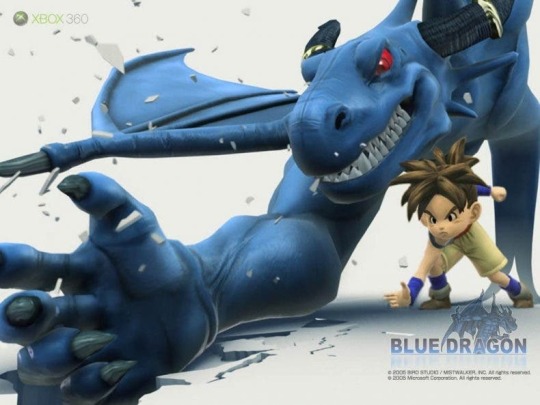
Xbox Has Blue Dragon: I actually got an Xbox One this year for free from my brother. Because of that I started to play Blue Dragon again and there’s a lot I would love to say about this game. I don’t know if I am fully committed to replaying it all the way through however but I find myself putting in a couple hours every few days and enjoying myself again. Does anyone else remember Blue Dragon? I feel like it really missed its audience and had it come out nowadays and probably for the Switch it would have really resonated with the Dragon Quest fandom a lot more instead of being thrown out to die on Xbox and constantly compared to Final Fantasy VII and the like which it had nothing at all similar with.
The Turbografx 16 Mini: This was probably one of the best mini consoles that have come out and I feel like thanks to the whole 2020 pandemic thing it was largely forgotten about. That’s a shame, it has a wonderful variety of great games, especially if you count the Japanese ones (god I wish I could play the Japanese version of Snatcher included), and a wonderful interface with fantastic music. One of these days I would really like to be able to play around with the console more seriously than I have already.
Fire Emblem Shadow Dragon Never Existed: So Nintendo localized the first ever Fire Emblem game on Nintendo Switch which is awesome to see them touching Famicom games again--I haven’t seen Nintendo of America rerelease old Famicom titles since Mysterious Murasame Castle on the 3DS, but their trailer hilariously made it seem like this is the first time ever they released Fire Emblem when in fact they had already localized the remake Shadow Dragon on the Nintendo DS nearly 10 or 11 years ago. I and many other fans I talked to all found this really hilarious, probably solely because of how much they kept repeating the fact that this is the first time you will ever be able to experience Marth’s story.

All that aside though I have to say the collector edition for this newly localized Famicom game is probably the most gorgeous retro reproduction I have seen in a long time, and I really spent many many hours just staring at the all clear glass mock cartridge. I have found myself really obsessing over retro reproductions during 2020, and obtained quite a few this year. I really hope this trend continues to go on in 2021 as recreating classic console packaging and cartridges is a lot of fun.
#video games#collection of saga final fantasy legend#SaGa#SaGa I#SaGa II#SaGa III#Raging Loop#Root Double#Snack World#Trials of Mana#Seiken Densetsu 3#Utawarerumono#Ys#Ys IV#ys memories of celceta
23 notes
·
View notes
Text
AI: The Somnium Files - Review2002
AI: The Somnium Files is a VN game with puzzle/adventure elements. Story-wise, I personally describe it as Lethal Weapon with SF elements in anime format and with bonus twists. The game was created by Kotaro Uchikoshi, of Zero Escape series. Similarly to ZE games, the story has branching points and multiple different endings, with some being required before reaching the others.
You play as Kaname Date, an amnestic detective in a slightly futuristic setting, whose partner is Aiba, an AI in Date’s cybernetic left eyeball. The main plot is about catching a mysterious serial killer, who removes left eyes of his victims, and discovering Date’s forgotten past. Through his investigation, Date, with help of Aiba, enters to other people’s dreams, the titular Somniums, in order to discover secrets hidden within peoples’ subconsciouses.
Comparing to Zero Escape series, I wouldn’t say the AI’s twists and revelations are as mindblowing. But AI is definitely stronger when it comes to emotional scenes, and highs of this game are incredibly high. It’s also at least as good Zero Escape when it comes to characters – while maybe the game doesn’t have characters on the level of the greatest in Zero Escape (999’s Zero and Ten from VLR)*, it has even better main duo than VLR (the best main duo in the series), has no weak characters (Quark, Alice and Clover are the reason why VLR cast can’t outshine 999 cast), and has an entertaining villain (999 had a good villain, but VLR and ZTD had their issues with it).
* Boss and Renju are good and quite complex characters, but Renju is an off-screen entity, while Boss doesn’t really have any kind of arc. Which is why they aren’t on the level of Ten, let alone 999 Zero.
Music is great, visuals are nice. The game is also the most immersive VN I’ve played. Instead of having static background with 2D characters, we, as Date, stand, or sit, in a 3D environment and turn around our head to look at various characters that are talking with us. Thanks to that, we can shift our focus from a talking character, to a character reacting to the other character’s words, and then even roll our own eyes over what we’re hearing.
Somniums are the main gameplay sections, just like the escape rooms are in Zero Escape. While investigating dream worlds is a fascinating concept, and I had some fun with completing them, the gameplay itself boils down to trial and error. There are rules and hints that help you solve the Somniums as puzzles, but I went through most of them by managing items that save limited time. And “perform an action, that has nothing to do with solving the current puzzle, to be able to perform next action in just one second” isn’t a legitimate puzzle solving. Sure, I can blame only myself for gaming the system, but I couldn’t game the good old escape rooms. And some Somniums were required to be gamed, particularly, the final one.
When it comes to the story, it’s good, but better not to approach it like Zero Escape. ZE were SF mysteries, while AI is a buddy cop story with elements of SF mystery. With such elements like the ridiculous actions scenes, Ota’s family character designs, or Mizuki’s abilities, Uchikoshi clearly wanted to have some anime fun with this project. And it is fun. The main duo is always entertaining with their back-and-forth, the intrigue and mystery are interesting, and the different paths allow to look at characters through different angles. The scenes that are intended to be touching are way batter than any attempts at that from Zero Escape. But there are really silly scenes, and there is a lack of complex elements, like motives of the villain. Still, with Uchikoshi botching complex motives in ZTD, I prefer simpler, yet more entertaining and memorable villains. And AI does provide such.
Overall, I recommend this game for fans of VNs and adventure games that don’t mind silly comedic elements. It’s a 8/10 story, with some interesting ideas and really well done character moments. And that’s what it comes to a spoiler-free review, as I decided to try starting blogging about interesting me aspects of writing in stories.
So, spoiler warning - I have couple of specific subjects to talk about. Those subjects are: the issue of the right side of the flowchart, why you don’t see the greatness of Iris’ character, and the Psync Machine sized plothole. That’s a lot of critique, but (assuming I will continue this series of blog posts), you should read me for spotted writing errors and solutions to them. But to not be overly negative, I will also praise and outline a good writing job, by focusing on the topic of Aiba as a perfect partner character.
The problem of the right side of the game.
Common complaint about the game is the right path from the first branching point, specifically Iris Route. Actually, I happened to complete Iris Route first, and I didn’t mind it. I still didn’t know what Uchikoshi was up to this time, and Zero Escape had taught me that an ending in Uchikoshi games isn’t a start yet.
Still, in retrospect, Iris Route has an issue with pacing and can feel bit jarring, after playing left side of the game, which is much more focused on the murder mystery. There’s also a problem of Iris herself, but that’s a separate topic.
The left side is laser focused on the game’s plot. The goal is to catch the serial killer, the stakes are bringing him to justice for killing Mizuki’s parents, the urgency is genuine threat of another person becoming the killer’s target. Urgency and stakes raise with each next victim. More and more questions are piling up, while all our actions are strictly plot related – we either try to obtain information from a separate criminal, clear up another framed suspect, or confront the apparent man behind it all.
Iris route is more SF focused, to a degree that is shocking after completing left side’s routes. There are raised questions that are related to the main mystery, but the focus is shifted on Date’s past and stuff like a possibility of prophetic dreams. Then we have Iris’ “death” with an emotional high in the form of questioning So and entering his Somnium. But then we are bamboozled with “Iris’ body” vanishing and her sudden “resurrection”, with the focus shifting on the possibility of altering reality with dreams… And then we fall into the rabbit hole of Naixatloz.
When I played this route, which was my first one, I assumed that Uchikoshi was telling me “you know my love for pseudoscience, so get a pile of pseudoscience and guess all the red herrings”. That in itself isn’t bad, but the stakes and urgency were gone, with the primary goal becoming more and more unclear.
Instead of more and more victims being targeted by the killer, like it happens on the left side, Iris route boils down to her status shifting between “not in danger”, “in danger” and “dead”. There are no more victims, only the first victim is dead. Stuff happens, like the attack of mercenaries and escape of a prisoner, but none have the weight of left side’s deaths and injuries. There is a possibility of bringing victims back to life, which removes any threat. Sure, this one sets up a beautiful tragedy for the route’s finale, but that’s the finale. Between So’s Somnium and the finale, the only real emotional moment is revelation of Pewter’s betrayal, but this doesn’t have any proper payoff akin to confronting So in Mizuki’s route. Fighting goons of a passive villain that hasn’t hurt anyone isn’t the same as fighting goons of a murderous villain that is prepared for a showdown. Renju with his mysterious agenda also isn’t the same threat like the serial killer that keeps killing or hurting characters around you. #89 can piss you off with his escape, but that’s as well.
Instead, the route is filled with exposition after exposition. We discuss Somnium technology, mythology, Iris’ close ones, alternate realities and conspiracies. We don’t progress with the case, we only get Iris back to the “not in danger” status for few times. Date becoming apparently brainwashed by her is intriguing, but that won’t carry a route with unclear shifting goals we don’t really progress toward. What’s left, Date getting lectured on Mizuki’s well-being? If you played the left side, you know her situation isn’t that bad as it could be. If you haven’t played it yet, you don’t know her enough to care that much.
Overall, Iris route has a good beginning and finale, but the middle is exposition filled and nowhere as engaging as the left side. And while Date and Aiba duo can easily carry the game, Iris route is a problem.
Iris – really good character dragged down by an execution misstep
There is a complaint that Iris, unlike Ota and Mizuki in their routes, doesn’t have a character development. For starters, Ota and Mizuki don’t really have much of character development outside of their routes. Iris does develop in her route, but negatively. The real issue is that the game doesn’t properly justify her early actions, which you may or may not like, depending on your subjective opinion.
Personally, I have a soft spot for cheerful/wacky female characters that can bring a smile on my face. Iris, being a girlish idol with trollish tendencies, was enjoyable for me. I liked her blackmailing Date to let her tag along, and I liked her trolling Ota or Moma. Although, the way she talked about Egyptian mythology or nanomachines was bit too infantile for me.
But when all is said and done, Iris is a good character, or at least there is a really good idea behind her. A crazy idol-slash-troublemaker that produces a scandalous video, just to force a detective to let her look at a crime scene and go wild with her imagination, is in fact a terminally ill brain cancer patient that tries to have as much fun and excitement she can get in her soon to be over life. She wishes for something special to happen to her, an adventure, a conspiracy, or to find at least a replacement for her lost father-figure. Unknowingly to her, she is a center of conspiracy her mother is part of, in order to protect her from the killers of her actual biological mother. Unknowingly for her, her mother has a plan to obtain money for her treatment. Unknowingly to her, the man she things as a replacement of her father-figure is her father-figure, but they both are unable to recognize one another. She had a special life, she had a chance for a long life, and she had discovered the man he was looking for, but she was unaware of it all.
And then she gets the adventure she wished for, in form of unknown armed men trying to kidnap her. Trauma from that event, mixed with the condition of her brain and tons of conspiracy theories, pushed her into delusion. The worst of all, she ended up dragging into said delusion the man that could help her, if she had not made him lose his own grasp on the reality. Unable to handle the trauma, she succumbed to her brain tumor, wondering if she was dying in the arms of the man she wanted to reunite with.
When Mizuki’s and Ota’s stories end on positive note, Iris’ story ends on a tragic one. Her wish for excitement before the end of short life provided her with excitement that prevented her life from being prolonged. The careless troublemaker that could irritate us at the beginning was understandable, but paid the ultimate price for her own actions.
But the execution fails to deliver that.
When it comes to Mizuki and Ota, the game is clear and to the point. We don’t have to connect the dots, to see what is moving about Mizuki finding that she has her family in Date. We don’t have to reflect deeply about it, to see that irritating manchild Ota actually deals with an unhappy situation of the person he does deeply care about. When you want to emotionally move the player, you can’t expect from him to figure out why he has to be moved, you have to directly slap him with reasons to care and then bash him with emotional scenes.
The problem is that in Iris’ route we don’t learn about her brain tumor. We learn about it when we switch the path and look for information in reality, not in her delusions. The additional layer to the tragedy in her ending is revealed to us when we are avoiding said ending. Plus, the game doesn’t ever connect said revelation to her early behavior with constantly forcing Date to let her tag along, that aspect of her remains unexplained. And not every player will think that deeply about it.
The game had an occasion to hammer down why Iris’ behavior had a purpose beyond her forcing herself to the plot. After the second discovery of “Iris’” body, but before Aiba helps us with figuring things out, Date could mourn Iris and think about everything he had learned about her. He could remind himself how Iris wanted to be around him, he could realize she knew that her days were numbered, he could conclude that she was just desperate to feel alive before her own end. Then, after Aiba helps him figure out that the body doesn’t belong to Iris, he could also think about the importance of staying in reality and that it would be a tragic mistake, if he had believed Iris about the conspiracy. It’s not much, but it clarifies the purpose to everything.
It’s subjective whatever you like Iris leeching on Date, it’s subjective whatever you find the above explanation as a sufficient justification. But the character’s actions being clearly purposeful and meaningful, and not just being borderline obnoxious for the sake of being obnoxious, is an objective quality to your writing. When it comes to Iris, the game does not have such a quality, when it easily could have.
Two short monologues, with some montage of flashbacks, and the character would be put into a different light. That’s why you need to be direct about emotionally affecting the player about your story and your characters. Otherwise, you won’t affect many.
The plothole with Psync Machine prototype
So, six years ago, Saito swapped bodies with Date in Rohan’s body, using the prototype of Psync Machine. Date escaped with Saito’s body, while Saito remained in Rohan’s body, and both have lost their memories. Date was found by Boss, who made him join ABIS. The police arrested Saito, and locked him up in the local Arkham Asylum. For six whole years, the Psync Machine prototype remained in secret location, with two knowing about it men suffering from amnesia.
But there was also a bunch of Saito’s people. You know, the same guys that stole the prototype and witnessed Saito and Date swapping their bodies? Whatever happened to those guys, and how come that they never said a word about it, especially to Saito’s father?
The game doesn’t recognize this at any point. We are supposed to accept that the prototype was hidden in abandoned chemical plant, and nobody knew about it until Saito regained his memories. Sure, Saito’s people could remain loyal to him, but how come that six years later Saito was forced to work on his own and, in true ending route, had to improvise swapping the body of dying Renju? And Saito really isn’t any kind of charismatic leader that would made bunch of criminals to never use or take away a machine that allowed them to become literally anybody. That’s simply an unbelievable plot convenience.
There is a simple solution to this. One way for explaining why nobody touched the prototype would be causing the explosion in the chemical plant right after Saito and Date swapping their bodies, which would be the cause for everybody present losing their memories. After the body swapping, due to Saito overlooking one of the prototype’s properties, Date was hit with an adrenaline shot, while Saito was drugged. Or maybe Saito’s men were the ones that didn’t tell him about that feature? While Saito was unable to do much, Date was still surrounded by Saito’s men, that were going to betray their boss and use the machine for their own ends. But Date did gain access to Saito’s memory, who had a plan of causing an explosion in the chemical plant, and also had finished his preparations. Perhaps Saito choose the chemical plant as a place for the body swapping, because he intended to trap there his own men and Date, because he wanted to become independent from his father and keep the secret of body swapping machine for himself. So, Date, not having any other way of preventing the Psync Machine from falling into wrong hands, finished what Saito had started and caused the explosion, wiping everybody’s memory. Of course, Date had no intention of losing his own memory, but something went wrong and he ended up barely escaping.
While this issue is an easily resolvable plothole, I doubt if Uchikoshi would prefer such a solution instead of keeping the hole unfixed. I mean, while Date’s decision to cause the explosion would be understandable, due to being outgunned by criminals and a dangerous device being at stake, Uchikoshi wouldn’t be able to have his happy dancing party ending anymore. Because Date would be indirectly responsible for Ota’s father death.
It’s because of the chemical plant explosion that Ota’s family’s diner has lost their consumers. Because of that, Ota’s father had to take different jobs and overworked himself to death. Because of that, Ota was the only one who could support his mother, after she started to suffer from dementia. Such a revelation couldn’t be just overlooked, to let everyone dance and have a shamelessly cheesy finale that celebrates Aiba’s miraculous resurrection.
Perhaps Uchikoshi planned for Date to cause the explosion, but backed away from it, realizing its implications. Which is why he has changed things last minute (moving the explosion two years before), while doing a rather sloppy job at it (so, people could enter the epicenter of explosion two years after it, but only six years later the restricted zone was decontaminated?). I can understand him making such a decision, having a dark twists for the sake of it isn’t really that good. It’s respectable that he wished to have an upbeat ending. But he should have think things through.
But to get myself out of this game’s shortcomings, let’s look at how it delivers what it promises in its title. AI, also Artificial Intelligence. Ai, also love.
How to write a Partner Character for a video game with Love in its name
Each medium is different, each medium has its different strengths. Books allow for imagination inspiring descriptions of events, and good books make their readers lost themselves in their settings. Movies allow to condense plenty of events in one-two hours, good movies make their viewers to invest themselves in an emotional roller-coaster. Video games (and RPGs) allow direct involvement in their events, good games make their players to have intense personal experience.
Which is why gaming journos that endlessly complain about video games writing supposedly not matching to books or movies (especially when they talk about movies) are nothing more than a bunch of desperate rejects from pop-culture sites they’d like to become a part of. But I digress.
In a book or a movie, Aiba would be a supporting satellite character. While I’ve compared the game to Lethal Weapon, she isn’t exactly a Danny Glover to Mel Gibson in this. While Gibson’s character ends up having more character development and ends up being arguably the protagonist, Glover’s character is still his own independent entity with his own supporting cast (his family), and he still makes his own major plot advancing decisions (sheltering a smuggled family in 4).
Aiba is closer to Aladdin’s Genie. She was explicitly created to support Date, she doesn’t really have much of an arc, up until the very end she has no interactions with most of the cast, and in her every single decision she faithfully aids Date. So, while she shares equal screen-time with Date, she doesn’t share an equal standing with him. And while both Aiba and the Genie are memorable, entertaining and likable, and also they both form a connection with their protagonist, with whom they have great chemistry (although Date and Aiba have greater, due to being bigger opposites), there is a limit to how much you can get invested in the fate of such a character. Let’s say that Aladdin couldn’t defeat Jaffar, but the Genie sacrificed himself to save the day, and then he got his own miraculous Disney-like resurrection. Let’s make it easier for the Genie, and imagine him as a more appealing waifu material.
On paper, Genie’s sacrifice and resurrection would be the same Aiba’s is on paper – a rather predictable nice to have miracle in a kids story that has no balls for a lasting tragedy. Even when said tragedy pretty much only could impact a single character, even if said character was our viewpoint protagonist. Even if the character is fun and them being okay can make you happy, depending on your subjective experience.
But we aren’t experiencing video game plots by reading them on the paper. Aiba isn’t just a fun and likable character that solely aided another character that we were following, Aiba is our Partner Character that aided us. The reason why she didn’t get much of interaction with other characters isn’t because she is some satellite character, it is because she was, rightfully, preoccupied with us and nobody else.
We people are quite selfish, and you’re lying if you deny this. The purpose of Aiba’s character was to make us feel sadness, over her sacrifice, and joy, over her resurrection. For that, the game needed to make us love her, which wouldn’t work so well in a book or a movie. How a game can make us love a character, in a way that other mediums simply can’t? By appealing to our selfish needs of usefulness and reliability.
Aiba is extremely useful to us. In Somniums she becomes playable, with the game presenting it as her following Date’s, ours, instructions. Outside of Somniums, Aiba’s abilities and tips help Date, us, to advance the investigation, making the game proceed smoother. Zoom, x-ray, lie detecting, hacking, googling information, perfectly calculated ludicrous plans, you name it. Aiba is also completely reliable, being the character that aids us 99% of time, and also one of very few that never turns against us. And like I’ve said before, she is always fun to have around.
While in other mediums Aiba could be more than just Date’s little useful techno-Genie, in a video game this isn’t just not needed, it would be also a potential hindrance. If Aiba had another character with similar importance to her as Date, in order to establish that she would have to, at some point, push Date aside for said character’s sake. And that would be pushing aside us. Notice that the second most important character to Aiba is Mizuki, and Mizuki also never turns against Date.
Add to that she always secretly loved Date, and we have our perfect videogame waifu. You will love her, you won’t want her to die, you will want her to return, you will rejoice when she returns. On the paper, it will be one of the most played out and cliché plot turns. But you won’t be experiencing it by just reading some paper.
#ai the somnium files#ai: the somnium files#somnium files#vn#video game#video games#game reviews#game review#story review#story analysis#review2002
1 note
·
View note
Text
Aaaaaaaaaa I get my copy of AI The Somnium files tomorrow!!!!!!
#its by the person behind the zero escspe series which is my second fave game series behind persona#so im super hyped#ZTD suffered but i still had fun with it#but i keep hearing this one is so much better and uchikoshi is back on track and im hyyyyyped
0 notes